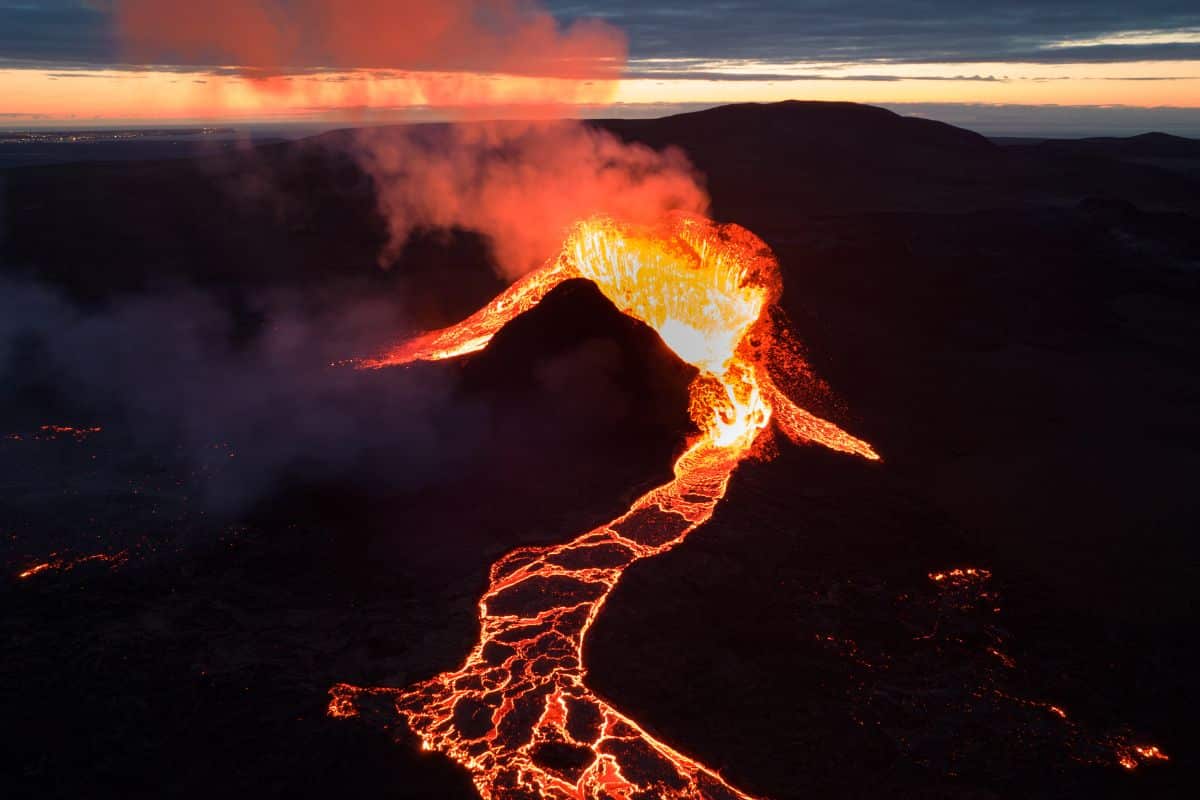
In 1831, a powerful volcanic eruption in the Kuril Islands propelled sulfur-rich ash into the atmosphere, resulting in global cooling and even causing the Sun to appear green.
The volcano, named Zavaritzki, remained enigmatic for nearly two hundred years, its effects obscured by layers of ice and the passage of time.
Recent studies have now linked this isolated eruption to a remarkable climate transformation observed in history.
The Quiet Eruption That Altered Earth’s Climate
Zavaritzki, a remote caldera volcano on Simushir Island, has often been neglected in discussions of significant volcanic events. While scientists had theorized that the eruption of 1831 precipitated abrupt temperature drops and peculiar atmospheric changes globally, pinpointing the source had proven challenging.
Progress emerged when volcanologist William Hutchison from the University of St. Andrews conducted an analysis of ice core samples gathered from Antarctica and Greenland. These samples revealed sulfur-rich particles that matched the volcanic signature of the Zavaritzki volcano.
A Greenish Sun
Records from 1831 detail strange occurrences in the sky, notably a Sun with a greenish hue. Experts believe this anomaly was due to sulfur aerosols released into the stratosphere, which scattered sunlight and altered specific light wavelengths.
In addition to these unusual sky phenomena, many regions across the globe experienced significant cooling. Chronicles and weather records from Europe recount unseasonable storms, early frosts, and poor harvests.
The climatic effects of this eruption resembled those of other notable volcanic activities, like the 1815 eruption of Mount Tambora, which led to the infamous “Year Without a Summer” in 1816.


The Critical Finding: Low-Potassium Ash
Researchers unraveled the mystery using geochemical evidence. Volcanic fragments embedded in ice cores displayed low potassium levels, a finding that excluded many well-known volcanoes, such as those in Iceland or Alaska.
This distinctive ash composition prompted scientists to investigate lesser-known volcanic ranges, including the Kuril Islands, which lie between Japan and Russia.
By comparing the mineral makeup of the ice core samples with fresh rock from the slopes of Zavaritzki, scientists confirmed a match. This finding showed that the eruption had left a lasting imprint in Earth’s frozen records, illustrating the volcano’s significant role in global climate dynamics.
The Hidden Dangers of Obscure Volcanoes
Zavaritzki is part of a volcanic system characterized by cinder cones, steep mounds that result from explosive eruptions. This topography indicates that the region has witnessed multiple eruptions in the past, raising concerns about potential risks for future climate shifts.
Volcanoes in high-latitude regions, like Zavaritzki, present a distinctive threat as they can introduce sulfur aerosols into the upper atmosphere, where they may persist for extended periods. A notable example is the 1991 eruption of Mount Pinatubo in the Philippines, which briefly reduced global temperatures by 0.5°C (0.9°F).
Why This Research is Crucial Today
Despite improvements in volcano monitoring techniques, numerous remote volcanoes remain unmonitored. An unexpected eruption from an unrecognized or overlooked volcano could significantly impact global climates, agriculture, and economies.
Contemporary scientists stress the importance of enhancing monitoring frameworks, particularly in uncharted volcanic territories. Developing more extensive surveillance networks and employing satellite imagery could aid in predicting eruptions, thereby protecting the delicate balance of our planet.









